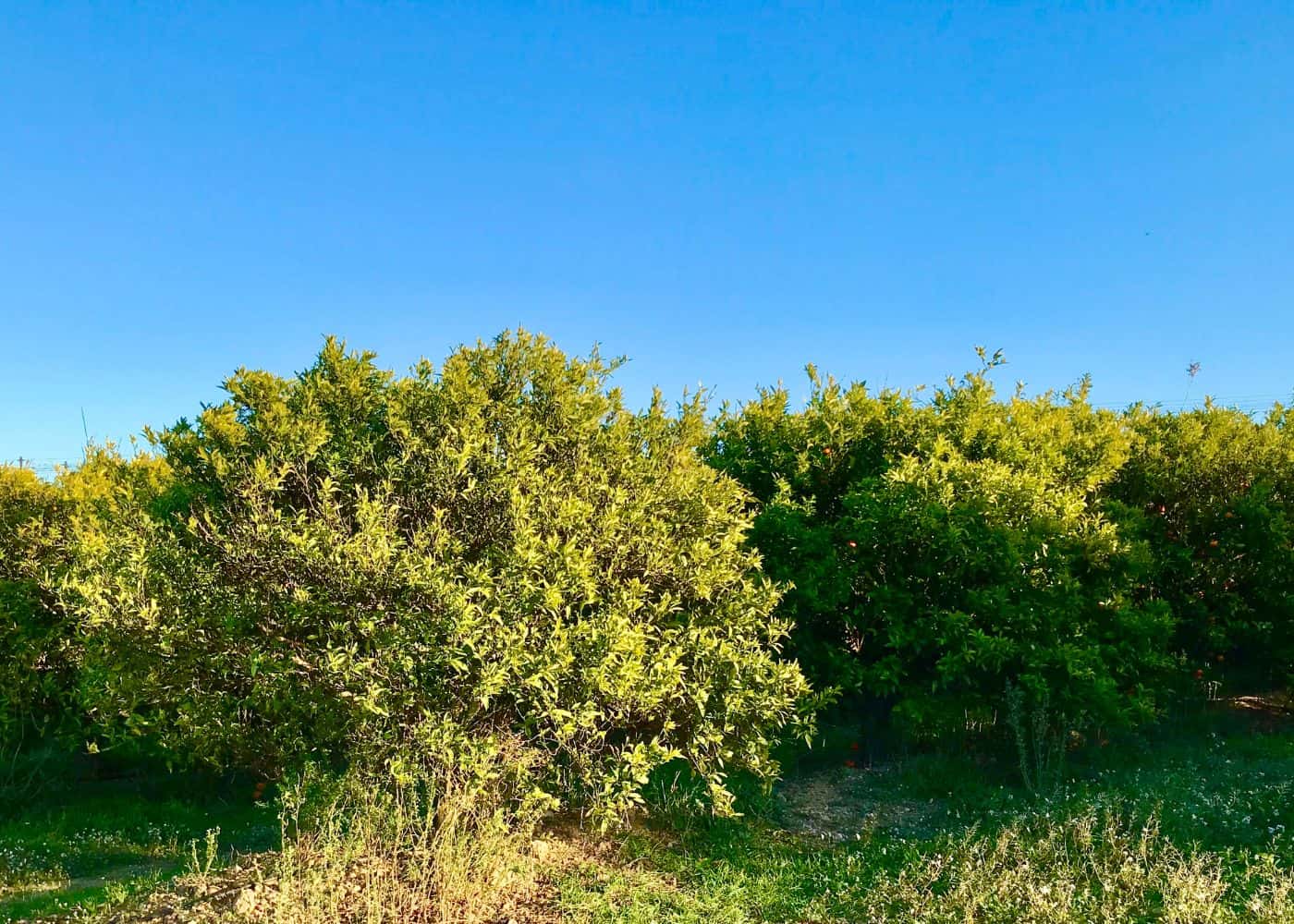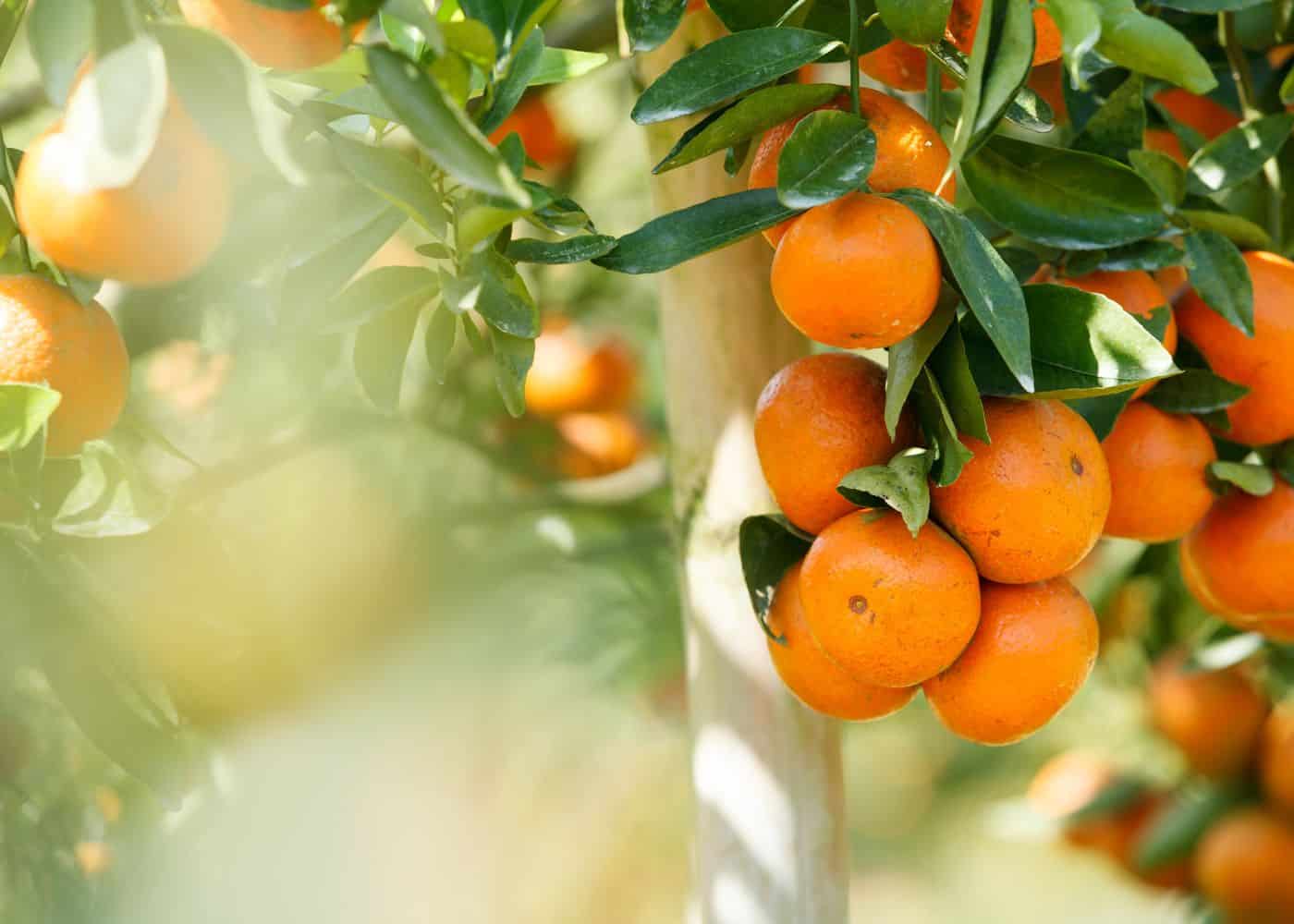Growing citrus trees, or any fruit trees, is one of the most rewarding gardening goals you can tackle. It also involves quite a lot of work if you want to get it right, including pruning.
Orange trees are typically pruned in early spring, with the exact time depending on temperatures in your zone. Those in warmer climates can prune as early as late winter, while those in cold climates should wait until all chances of frost have passed to prevent cold damage.
Read on to learn all about when to prune orange trees!

When to prune orange trees
Orange trees are usually pruned once per year, in early spring. The best time to prune is after all risk of freezing weather has passed but before the really hot days of summer arrive.
Small branches can be removed in the winter, but try not to do too much pruning. Pruning too early in the spring in cooler locations can leave the trees susceptible to frost damage, and these trees sprout vigorously after pruning, and this new growth is quite tender. Pruning in the summer can stunt the tree, especially if it is already stressed.
Dead, damaged, and diseased branches can and should be removed as soon as they are observed, any time of year. You can also trim off any odd branches here and there as you are out there with the clippers.
“Do most of what little pruning is necessary just before the spring flush of growth where winters are cold, or anytime in perpetually hot climates.”
The Pruning Book, by Lee Reich

What is pruning?
If you’re new to the gardening world, you may be wondering what the term pruning means. What is the difference between trimming and pruning? And why is pruning so often mentioned in discussions of fruit trees?
In simple terms, pruning involves selectively trimming a plant or tree, usually with the goal of improving growth in some way. It can also be used to improve shape, but when it comes to fruit trees, the main goal is typically improving growth and overall yield.

Why is pruning important?
Pruning has a number of important benefits that apply not only to your citrus tree but to most garden plants:
- Encouraging new growth: Pruning creates wounds in a plant that release a chemical for healing. This also leads the plant to push out new growth at the site of the cut when trimmed in a certain way, resulting in more branches and ultimately, more fruit.
- Improving light exposure: Trimming extra leaves and branches allows the sunlight to penetrate through the top of the tree, reaching the leaves and fruits from every angle and limiting shading.
- Removing damaged branches: No matter the cause of damage in stems and branches, the plant will work toward healing the problem. This draws energy away from branch, leaf and fruit development and concentrates it where you don’t really want it.
- Preventing or treating diseases: Citrus trees are susceptible to a number of diseases that can impact your harvest and, in severe cases, kill the entire tree. Pruning gives you the opportunity to remove any signs of disease, preventing spread. It also improves airflow that stops diseases from taking hold in the first place.
- Improving shape: Unruly branches that cross or grow in different directions impact the overall tidiness of your tree. Cutting these will improve the look of your tree and its growth too.

Do orange trees need to be pruned?
Take a look at any tree in nature and you may come to question whether pruning is actually necessary for orange trees. In the wild, they live for years and produce mountains of fruits without someone trimming them regularly.
However, our gardens are not quite like the natural habitats of these trees. To optimize growth and prevent problems that may pop up in our backyards, pruning is definitely recommended.
Besides the many benefits mentioned above, pruning also gives you the strongest possible harvest – an ultimate goal for orange growers.
That doesn’t mean you need to trim drastically. Even fruit trees, for which pruning is most vital, can do with only a small trim at the right time for the best possible growth.
How often do orange trees need pruning?
Orange tree pruning and general fruit tree pruning is usually only done once per year. Pruning too often can stunt growth, while skipping pruning season for a year can influence your harvest the following year.
There is no need to prune your orange tree at planting time. Give it time to adapt to its new surroundings before making any cuts to limit problems with stress.

When to prune orange trees
Orange trees are generally pruned once per year in early spring. The exact month will differ slightly depending on your climate and chosen variety.
Pruning citrus at the right time is the only way to reap the benefits mentioned above and avoid problems with growth.
If you prune too early, your tree may face cold damage and take much longer to recover. If you prune too late, you may cut off essential buds that will eventually turn into fruit, limiting your harvest.
When to prune orange trees in warm climates
If you live in warmer climates, it’s best to start your pruning session in the last month of winter. As long as there is no potential for frost, this will coincide with warmer weather and new growth spurring, making it ideal for a trim.
When to prune orange trees in cool climates
In cooler climates, pruning in late winter or even the first few weeks of spring may cause serious damage. Trees take longer to heal from pruning than herbaceous plants and are very vulnerable to cold damage at this time. Open wounds exposed to frost may kill off branches and soft new growth – a potentially permanent problem.
Make sure all signs of frost have passed and the weather has warmed slightly before pruning. Don’t prune after April as you may remove early buds that lower fruit count.
When to prune potted orange trees grown indoors
Orange trees can be grown indoors in pots. Prune them after flowering is complete. This will allow for control over how many potential fruits remain. The new growth in the summertime will include the flower buds that will flower next spring.
Some orange tree varieties bear fruit only every second year (especially when grown indoors). If your tree seems to bear every other year, avoid pruning during the year that it is not fruiting, as pruning will remove the flower buds that are needed for next year’s crop.

Things to avoid when pruning orange trees
Avoid these common mistakes when pruning to make sure you don’t unknowingly stunt growth.
- Pruning at the wrong time: Encouraging new growth when the weather is too cold or hot will draw energy away from the plant that could go into developing fruits.
- Using blunt shears: Cleaner cuts will heal far quicker than blunt hacks.
- Over pruning: Remove small amounts at one time to manage growth. Pruning excessively can lead to shock.

FAQs about orange tree pruning
What month do you prune orange trees in Arizona and other desert climates?
In Arizona, orange trees are generally pruned in February to early April, depending on local conditions and weather patterns.
What month do you prune orange trees in Florida and other coastal climates?
In Florida, orange trees are usually pruned sometime from late February through until late March, depending upon your local climate and the early spring weather.
References
- Pruning citrus, University of Arizona
- Citrus care basics, University of Florida
- Pruning citrus, University of California









